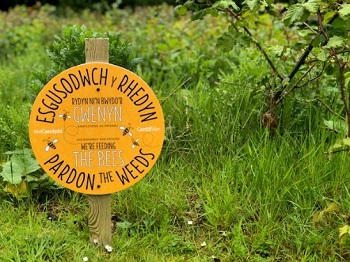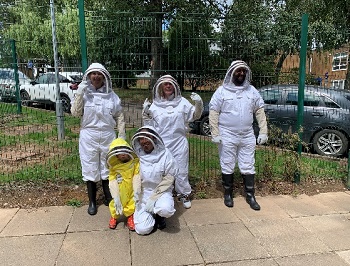The key objectives within the Biodiversity Action Plan include:
Compliance with legal and other obligations
Protect & enhance the biodiversity of the University estate
Avoid the use of environmentally harmful substances, materials, and processes
Use native planting and develop suitable habitats for native wildlife
Include biodiversity within decisions regarding investment, procurement, planning & design, new construction, servicing & maintenance
Create new green space and ensure ecological connectivity, expanding wildflower coverage and trailing reduced-mowing regimes.
On-site composting and reuse of all biomass arisings from grounds maintenance
Use biodiversity to promote health & Wellbeing
Minimise and mitigate negative impacts of university operations on the environment
Raise awareness of biodiversity conservation internally and externally
Develop links with relevant external organisations
Monitor biodiversity of the estate through species and habitat surveys
Establish a Biodiversity Working Group to coordinate biodiversity action on campus
The University also monitors and manages biodiversity as a part of its ISO14001:2015 accredited Environmental Management System. In line with the requirements of the ISO14001:2015 standard, this means that the ultimate responsibility for the delivery of objectives and targets, including those related to biodiversity, rests with the Vice Chancellor and University Executive.
There are currently three targets within the Environmental Management System concerned with biodiversity.
a) Promote biodiversity conservation and improvement across the University estate
b) Increase unimproved grassland/wildflower meadow areas across the University estate
c) Review the University Biodiversity Action Plan every three years
As part of the Environmental Management System, progress on biodiversity is reported to the Sustainability Group as part of the Annual Environment Report and Annual Management Review. This is then reported to the Vice Chancellor and Executive by the group Chair.
Green Spaces on Campus
 Cardiff Metropolitan University is surrounded by extensive areas of biodiversity. Llandaff Campus is situated right next to Bute Park, with acres of green space, one of Cardiff’s premier attractions. The park contains a magnificent arboretum and a wealth of archaeological and nature conservation interest. It is also run through by the River Taff and the Taff Trail.
Cardiff Metropolitan University is surrounded by extensive areas of biodiversity. Llandaff Campus is situated right next to Bute Park, with acres of green space, one of Cardiff’s premier attractions. The park contains a magnificent arboretum and a wealth of archaeological and nature conservation interest. It is also run through by the River Taff and the Taff Trail.
Cyncoed Campus is based next to our two hectares of mature woodland. Both campuses have green spaces of extensive fields and meadows that boost biodiversity. Cardiff Metropolitan University takes part in the national No Mow May campaign every year, leaving wildflowers to grow to help pollinators such as bees, butterflies and moths.
Bees on Campus

As well as protecting and enhancing the biodiversity of our campuses and land, a core part of our goals is to engage more proactively with students, staff and our local community, to educate and communicate the importance of biodiversity, and to inspire people to get involved in biodiversity and climate action initiatives.
Since 2019, Cardiff Metropolitan University has had its own bee hives on campus, which have brought people together and created an eagerness to get involved. Every summer, the Sustainability Department in collaboration with Rob Lewis, our lecturer and beekeeper run Bee Workshops though which people can learn more about the importance of biodiversity and pitch in ideas of how we can improve our green spaces year by year. Additionally, we often organise Nature and Flower Spotting Walks to encourage people to connect with nature.
Bee Workshops and other events are published each year on our Events page and Eventbrite.
Get involved
Contact us at
sustainability@cardiffmet.ac.uk if you want to know more, volunteer to help or if you have an idea you would like to talk about.
